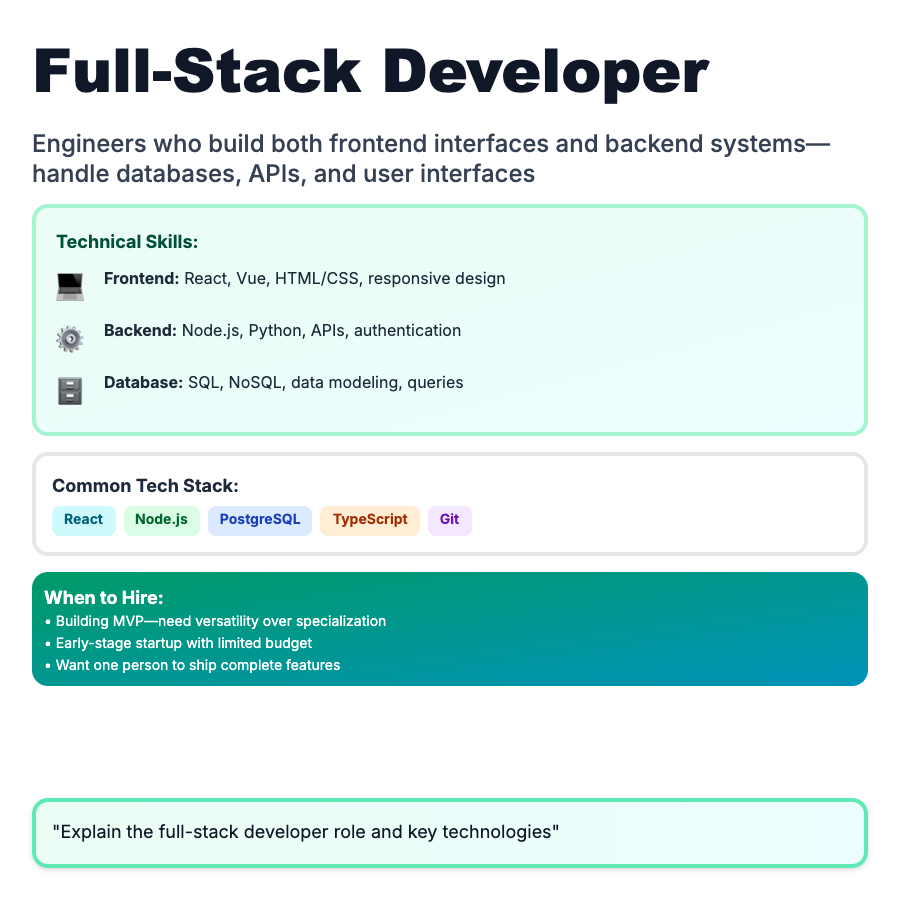
What is Full-Stack Developer?
Full-stack developers write code across the entire technology stack—frontend (React, HTML/CSS), backend (Node.js, APIs), and database (SQL, NoSQL). They ship complete features independently, making them ideal for startups and MVPs. Full-stack devs prioritize versatility over deep specialization, though most lean toward frontend or backend.
When Should You Use This?
Hire full-stack developers for MVP development (need to ship fast with small team), early-stage startups (limited budget, need versatility), prototyping new features (want one person to own end-to-end), or when you need generalists who can adapt to changing priorities. Best for teams under 10 engineers.
Common Mistakes to Avoid
- •Expecting mastery of everything—full-stack means capable, not expert at all layers
- •Overworking full-stack devs—context switching between frontend/backend is mentally taxing
- •Skipping specialists—as you scale, deep expertise in backend, frontend, or infra becomes critical
- •Vague job descriptions—specify your stack (React? Vue? Node? Python?) to attract right candidates
Real-World Examples
- •Startup MVP—one full-stack dev builds entire product from database to UI
- •Small product team—full-stack devs own features independently, shipping faster
- •Prototyping—full-stack dev quickly tests new idea without coordinating multiple specialists
Category
Roles
Tags
full-stackdeveloperengineeringfrontendbackendhiringstartup-team